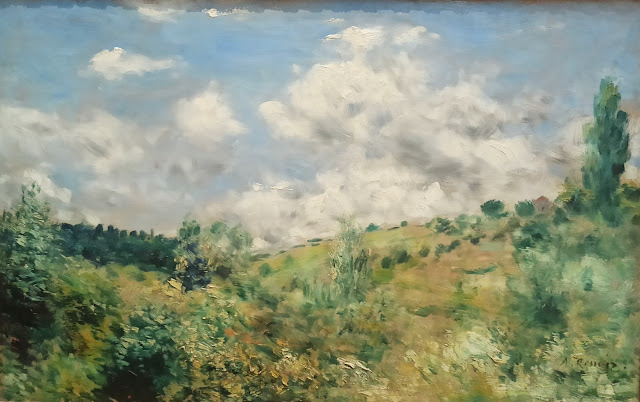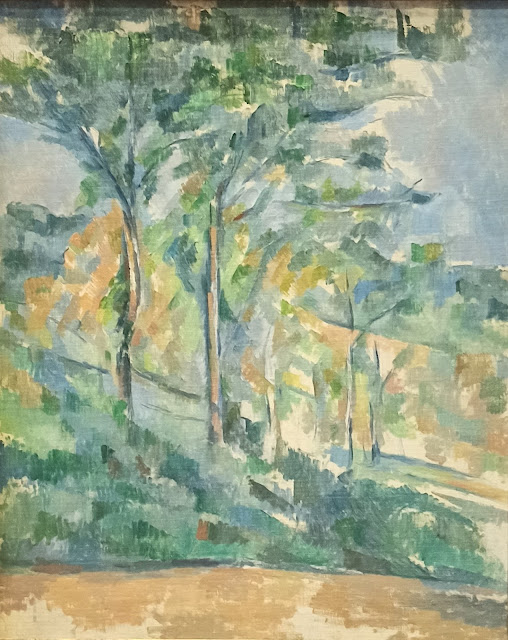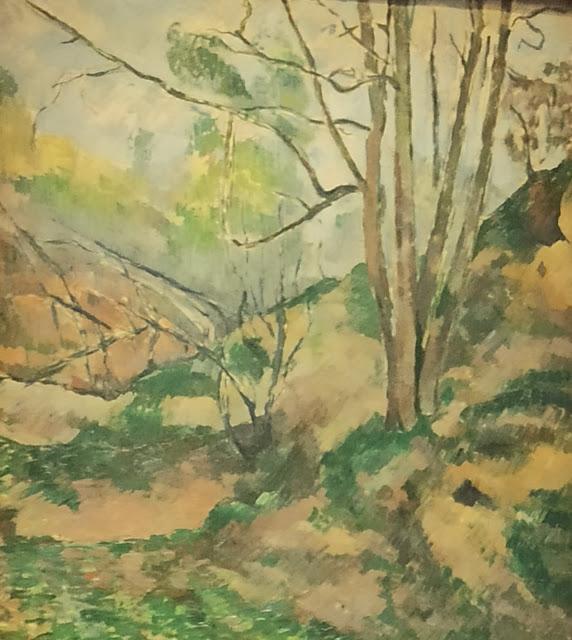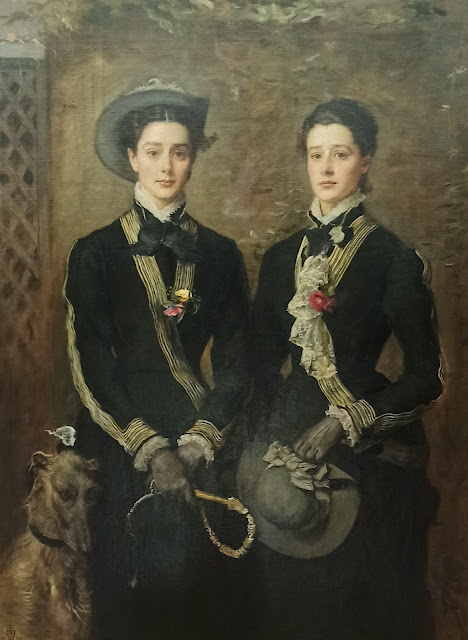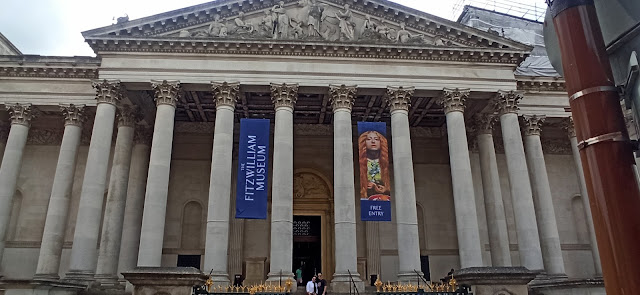Yesterday I visited the Fitzwilliam Museum. Strolling around Cambridge - especially on a lovely warm summers day - is a delight; and the Fitzwilliam is deserving of a special visit. I think such a museum demands multiple visits, so I plan to cover different aspects in the coming weeks.
For this blog, I would like to write about some of the impressionist collection.
Adjacent to Peterhouse College, it is an imposing palatial building on Trumpington Street. Founded in 1816, it is a serious museum and houses various historical collections of art and antiquities for the University of Cambridge.
Piette's House at Montfoucault by Camille Pissarro
Camille Pissarro made a number of paintings at his friend Ludovic Piette's estate. This is a beautiful one. Although the snowy matutinal white is formative, the earthly and woodland gray-verdancy melts just beneath. The limited pallete and brushwork makes for quite a forceful serenity and rustic calmness.
Poplars by Claude Monet
In the summer of 1891, Claude Monet painted Poplars along the River Epte. He wanted to capture the trees during the changing seasons. It's interesting how the trees seem to fade and melt at the background. The shifting sky-cerulean-white adds to the feeling of wind blowing the trees.
La Place Clichy by Renoir
Renoir is great at the hustle-bustle of Paris and the feminine. The careful brushstrokes create an elegant textured overcoat, her hat with a bow-knot, and hair wrapped in a bun. It seems to be the edge of a pavement, a horse-and-cart approaching, everything else is shrouded in a haze, and our attention is focused on this lady crossing the road. Lovely.
The Gust of Wind by Renoir
The painting is called 'The gust of wind' and it is clear why. The warm summery breeze pushing up through the clouds. The earthly terrene and greenery blurs - but the thick heavy brushstrokes seem to create a movement among the foliage. A warm breeze. Again, lovely.
According to my encyclopedia, it seems this painting was financial disaster for Renoir. Not only did its public exhibition - outside the official Salon - engender hostility, but he was only paid 120 francs - which was the lowest paid for any painting in the entire exhibition. oh dear.
Springtime by Monet
Monet painted his own daughter and son here. There is something sweet about these two. It looks the sister in the darker blouse turned away from her book to listen to her brother.
This is just lovely. The wonderful textures and shades of green amid the patches of sunshine breaking through the trees. I really love the stretching-bending curvature of the trees and how they almost blanket the heavens. Makes you wish you could join the conversation!
The Forest Clearing by Cezanne
Paul Cezanne's painting was supposed to be unfinished, but the patches of incomplete work have been incorporated into the general feel of the painting. What's clear to me is how perspective can warp everything. What we focus on, and what we exclude. There is a sense of a linear delineation in the painting and broader shapes. Even the colour palette - with its subtle smudges and blotches - seem to accentuate those underlying shapes. I can understand why Cezanne is hailed as the forefather of cubism.
Undergrowth by Cezanne
An autumnal feel, barren trees, dappled light. Cezanne likes a forest clearing. This painting was originally brought by John Maynard Kaynes.
Portrait of Heneage Lloyd and his Sister by Gainsborough
This is a lovely painting by Thomas Gainsborough. There is a distinct feel and atmosphere to the broader picturesque landscape that complements the two characters. One of calm, serenity and peace. These two are presumably siblings; and, to me, it feels like they are having a lovely day strolling together. There is a sense of sweetness and tranquility.
The Twins, Kate and Grace Hoare by Millais
I don't know much about Sir John Everett Millais; but this painting is fascinating. It seems he painted twins sisters of a wealthy manufacturer. I can't help but feel there is a vulnerability in both sisters - a quiet nervousness or anxiety. It makes me want to look closer. Great painting.
On the Brink by Elmore
This painting by Alfred Elmore is captivating. According to the gallery note, the lady lost a fortune gambling; and is now out in the darkness of the evening. The warmth, laughter, light and energy are behind her. The whispering man is offering to clear her debts ... but the price would be her virtue. The painting draws us in. Her face is heartbreaking. She seems in a daze of anxiety and worry, and drained of colour. Just wish I could offer a consoling hug.
Cubist Head: Portrait of Fernande by Picasso
This painting doesn't seem to intrigue me so much. Although the portrait's sense of depth is interesting and the landscape is curious. There is something immersive with the painting's sharpness, movements, lines, shapes etc. but I can't say I really warm to this one.
Cubist design: still-life by Georges Braque
Georges Braque with more cubism. The way I see it, a painting would normally guide the viewer. A painter would know the human eye would search for distinct details, or angles, or colours. When we look at an object, our eyes scan it. In so doing, we register certain details before moving to the next point of interest. Cubism seems to take the handrail away and I wonder whether the artist is communicating to me, or I'm communicating to myself. It feels like a mental scramble.
And, finally, a few of the Fitzwilliam itself ...



